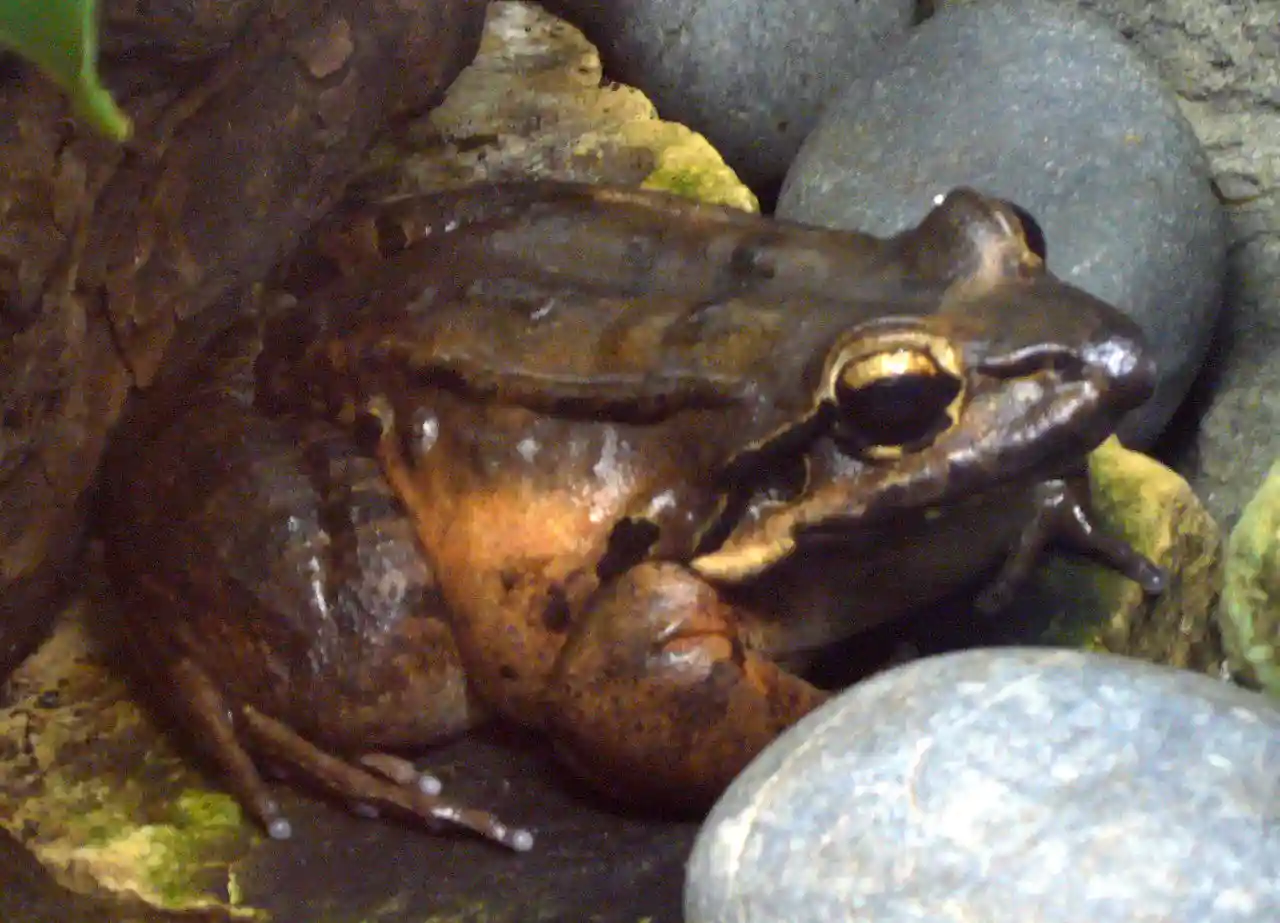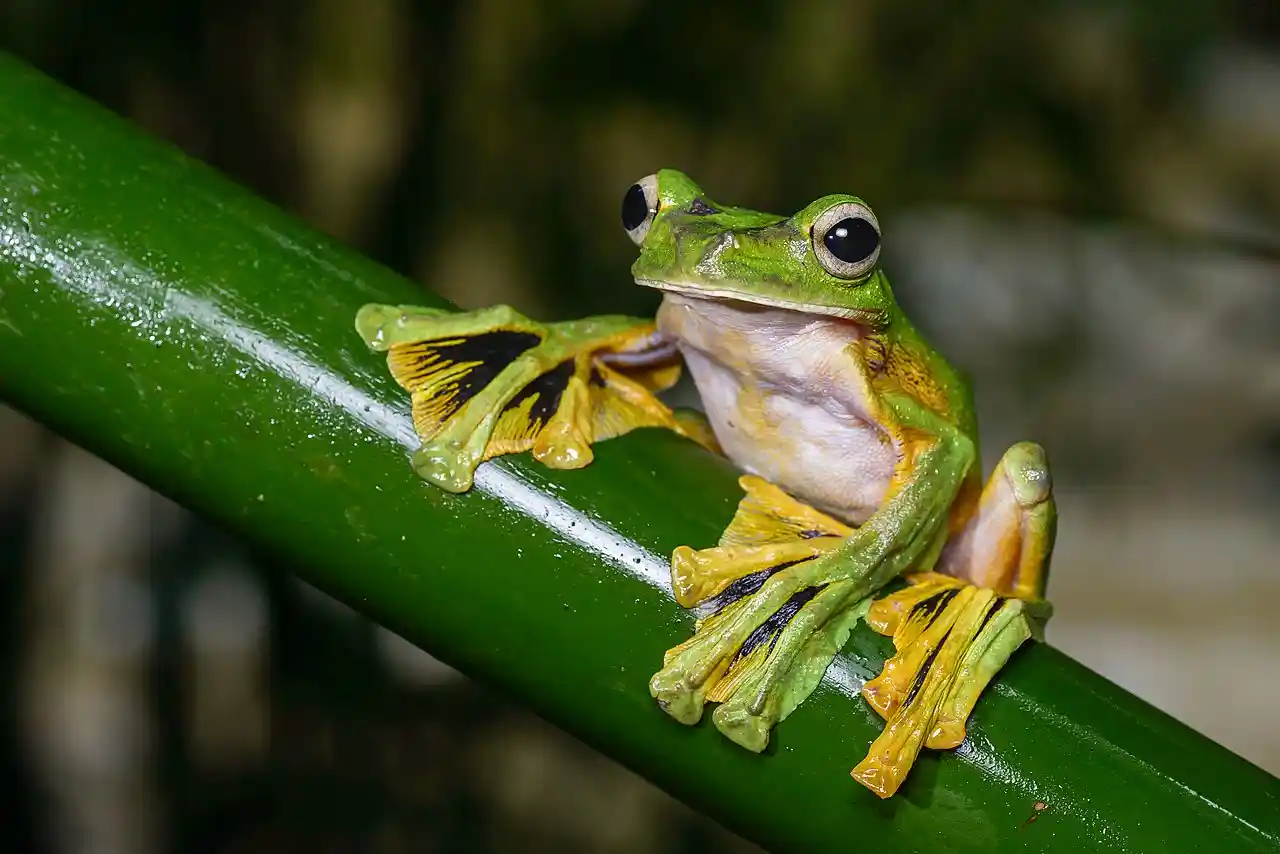Fascinating Creatures: Frogs and Their Unique Adaptations
Discovering the Wonders of Frog Life
Picture this: a tranquil pond nestled among vibrant green vegetation, emanating a symphony of croaks and chirps. In this idyllic setting, you might catch a glimpse of one of nature’s most captivating creatures – the frog.
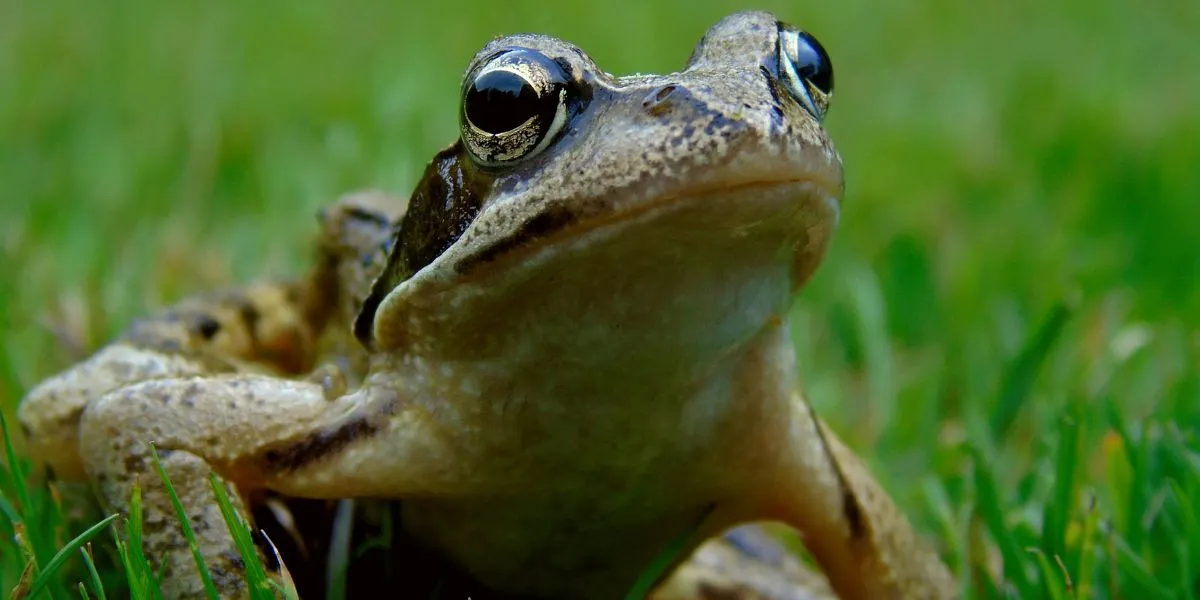
Frogs are a diverse group of amphibians that have captivated the human imagination for centuries. With their mesmerizingly large eyes, long hind legs, and ability to leap great distances, frogs are truly remarkable beings.
One characteristic that makes frogs so intriguing is their remarkable adaptations to various environments. Their unique anatomical features allow them to thrive in both terrestrial and aquatic habitats.
The Quest for Underwater Breathing
As we delve deeper into the world of these magnificent creatures, one question inevitably arises: Can frogs really breathe underwater? The prospect seems counterintuitive since we typically associate breathing with lungs and air.
However, frogs possess an array of extraordinary adaptations that grant them the ability to survive underwater for extended periods. To understand how they accomplish this feat, we must explore the intricacies of frog respiration.
Unlike humans who rely primarily on lung ventilation for oxygen intake, frogs employ a multi-faceted approach that involves various organs working together harmoniously.
These fascinating mechanisms include cutaneous respiration through their permeable skin, gill respiration during tadpole stages or in some adult species adapted to aquatic life, as well as an intriguing technique known as buccal pumping – using movements of their throat muscles to draw air into their lungs indirectly.
Mind-Blowing Adaptations
Frogs possess an astonishing ability to extract oxygen from their surroundings, making them true masters of respiration. Their skin, which is highly permeable to gases, allows for cutaneous respiration. This means that when submerged in water, frogs can absorb oxygen directly through their skin.
This remarkable adaptation enables them to extract dissolved oxygen molecules from the surrounding water and transport it throughout their bodies. In addition to cutaneous respiration, certain frog species also develop gills during their early tadpole stages or maintain them throughout adulthood.
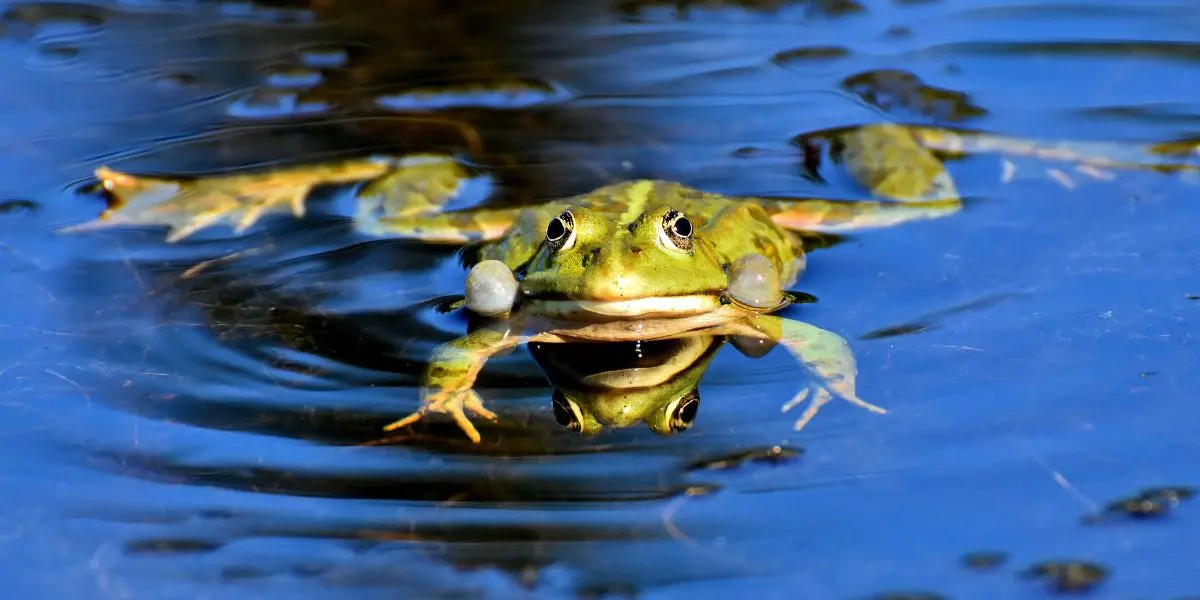
These gills function similarly to those of fish, extracting oxygen from the water as it passes over the delicate respiratory surfaces. While not all frogs possess permanent gills, this adaptation showcases the incredible diversity within the frog family and its ability to adapt specifically to aquatic environments.
Intrigued by these amphibious marvels? Let’s dive deeper into each of these unique adaptations – cutaneous respiration, gill utilization, and buccal pumping – as we uncover the mysteries behind a frog’s ability to breathe underwater.
Frog Respiration Basics
Amphibian respiratory system overview
When it comes to respiration, frogs are quite fascinating creatures. Unlike humans who solely rely on lungs to breathe, frogs have a unique respiratory system that allows them to exchange oxygen in various ways. Their respiratory system is specially adapted for their semi-aquatic lifestyle.
It consists of several organs and structures that work together to ensure efficient gas exchange. One key aspect of the amphibian respiratory system is the presence of both lungs and skin as major respiratory organs.
While the lungs play a crucial role in respiration, frogs possess another remarkable adaptation – cutaneous respiration through their skin. This means they can absorb oxygen directly from the environment through their moist skin, bypassing the need for gills or specialized breathing apparatus found in other aquatic animals.
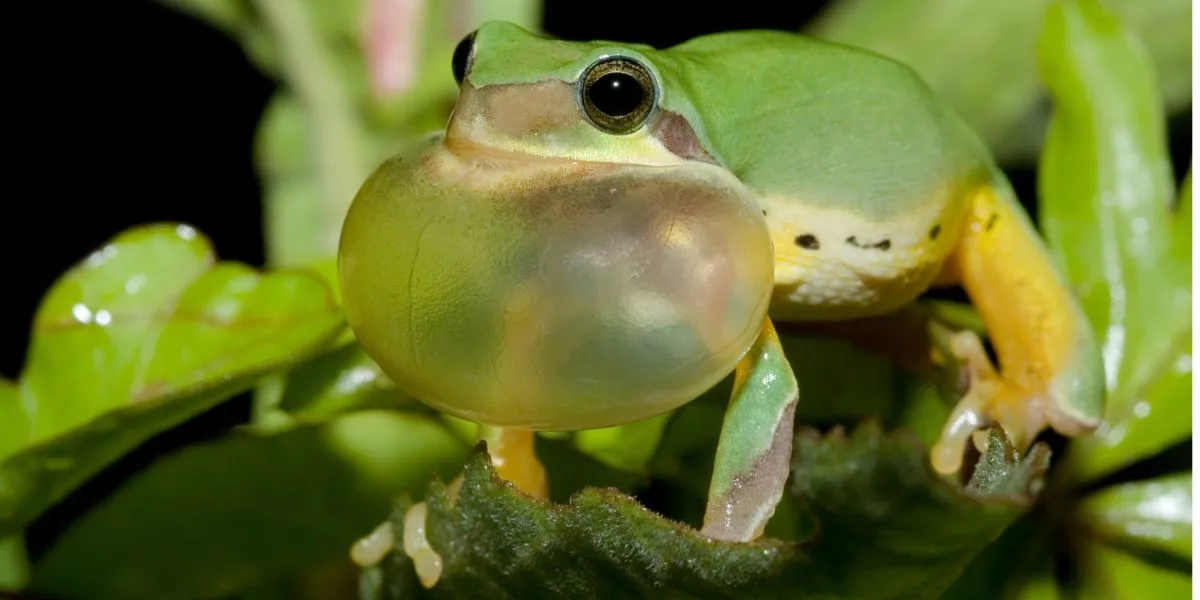
The role of lungs in frog respiration
Although cutaneous respiration is an essential part of a frog’s ability to breathe underwater, their lungs also play a crucial role. Located within the chest cavity, a frog’s lungs function similarly to ours by facilitating the exchange of gases between air and blood vessels.
However, unlike mammals whose breathing relies heavily on lung expansion and contraction, frogs have a more passive way of ventilating their lungs. They lack a diaphragm muscle but instead rely on positive pressure breathing.
When drawing air into their body, frogs lower their mouth floor and close their nostrils while raising the floor of their throat (known as buccal cavity) which forces air into their lungs – this process is called buccal pumping.
During periods of increased activity or when under stress, frogs may switch to negative pressure breathing temporarily where they utilize muscles around their throat for inhalation creating negative pressure inside lung chambers which draws air in.
Understanding the basics of frog respiration is vital to comprehend how these amazing creatures can breathe both in and out of the water. Their respiratory system is a combination of lungs and skin, allowing them to adapt to a semi-aquatic lifestyle.
While lungs facilitate the exchange of gases, it is their skin that truly sets them apart, enabling cutaneous respiration for efficient gas absorption. This incredible adaptation makes frogs truly unique among vertebrates.
Cutaneous Respiration: The Skin’s Magic
Frog skin anatomy and structure
Frog skin is a remarkable organ that plays a crucial role in their ability to breathe underwater. Unlike human skin, which primarily serves as a protective barrier, frog skin is thin and permeable, allowing for the exchange of gases. It consists of multiple layers, including an outermost layer called the epidermis and an inner layer called the dermis.
The epidermis is responsible for secreting mucus, which keeps the skin moist and aids in respiration. The dermis contains blood vessels that facilitate gas exchange.
The unique structure of frog skin allows it to absorb oxygen directly from the surrounding water. The outer surface of the skin is covered with tiny finger-like projections called papillae, which increase the surface area available for gas exchange.
These papillae are densely packed with specialized cells called capillaries that contain red blood cells. When immersed in water, oxygen from the water diffuses through the moist outer layer of the skin and enters these capillaries where it binds to hemoglobin in red blood cells.
How cutaneous respiration works in frogs
Cutaneous respiration refers to the process by which frogs absorb oxygen through their skin. When a frog submerges itself in water or remains in a damp environment, its skin becomes highly permeable to gases like oxygen and carbon dioxide. This allows oxygen molecules present in water to diffuse across the thin membrane of frog’s moistened skin into its bloodstream.
Once inside a frog’s body, oxygen is transported by red blood cells throughout its circulatory system to various tissues where it is utilized for cellular respiration. At the same time, carbon dioxide produced as a waste product during cellular respiration diffuses out of tissues into circulation and eventually passes out through the frog’s skin back into the water.
Cutaneous respiration is crucial for frogs, especially when they are underwater for extended periods or in environments with low oxygen levels. In fact, some species of frogs rely primarily on cutaneous respiration for their oxygen needs rather than using lungs.
This remarkable adaptation allows them to survive in diverse habitats, including marshes, ponds, and rainforests. The skin of frogs plays a vital role in their ability to breathe underwater through a process known as cutaneous respiration.
The unique anatomy and structure of frog skin enable efficient gas exchange by allowing oxygen from the surrounding water to diffuse into their bloodstream while simultaneously eliminating carbon dioxide. This extraordinary adaptation showcases nature’s ingenuity in equipping these amphibians with the means to thrive in various aquatic environments.
The presence of gills in tadpoles and some adult frogs
Tadpoles, the larval stage of frogs, are well-known for their distinct appearance with long tails and feathery external gills. These gills play a crucial role in their respiration as they live exclusively in water during this stage.
The gills enable tadpoles to extract dissolved oxygen from the water, just like fish do with their gills. As they mature into adult frogs, most species undergo a remarkable transformation called metamorphosis.
During this process, the tadpoles’ external gills gradually disappear as they develop lungs to facilitate breathing on land. However, it’s worth noting that certain species of adult frogs retain functional gills even after the completion of metamorphosis.
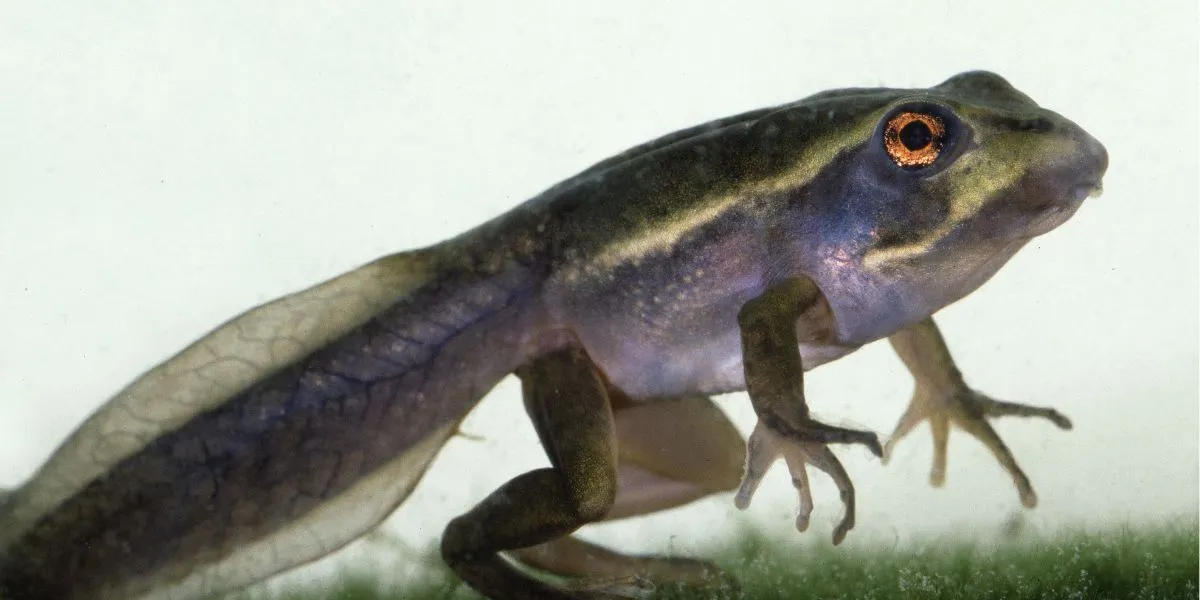
These unusual frogs are found primarily in tropical rainforests and other moist environments where they reside near bodies of water. Their retained gills allow them to remain semi-aquatic throughout their lives, enabling them to breathe underwater for extended periods or even rely solely on aquatic respiration.
This unique adaptation sets them apart from their lung-breathing counterparts and demonstrates the incredible diversity within the frog community. Moreover, some adult frogs that possess internalized or vestigial (reduced) gill structures have been discovered.
These remnants may not be fully functional for respiration but serve as vestiges of an ancestral trait. Such findings highlight the evolutionary history of amphibians and provide valuable insights into how these fascinating creatures have adapted to various ecological niches over millions of years.
Adaptations for gill respiration in aquatic environments
Frogs that rely on primary or secondary aquatic respiration possess specialized adaptations that enable efficient oxygen uptake through their gills in water environments. Firstly, these amphibians often have enlarged branchial chambers housing intricate networks of blood vessels, enhancing the surface area available for gas exchange. The increased surface area allows more oxygen to be absorbed from the water, supplementing their respiratory needs.
Additionally, some aquatic frogs have developed mechanisms to facilitate gill ventilation while submerged. They achieve this by utilizing specific movements such as mouth opening and closing or throat pumping.
These actions create a flow of water over the gills, ensuring a constant supply of oxygen-rich water needed for respiration. Certain species can even actively pump water through their gill slits by using specialized muscles.
Furthermore, these frogs exhibit adaptations that enhance their ability to extract dissolved oxygen efficiently. For instance, some species possess thin and delicate gill filaments equipped with tiny projections called lamellae.
These lamellae further increase the respiratory surface area and optimize oxygen absorption from the surrounding water. Such adaptations demonstrate nature’s remarkable ingenuity in enabling amphibians to thrive in diverse aquatic habitats.
Buccal Pumping: Breathing without Lungs?
Understanding the buccal cavity’s role in frog respiration
When it comes to breathing underwater, frogs are masters of adaptation. While they do possess lungs, these remarkable creatures have also developed an ingenious method known as “buccal pumping” to extract oxygen from water.
The buccal cavity, located between the mouth and throat, plays a crucial role in this process. Unlike humans who rely primarily on their lungs for respiration, frogs have evolved to utilize this unique mechanism that enables them to survive in aquatic environments.
The buccal cavity functions as a dynamic pump during frog respiration. When a frog breathes, it opens its mouth and draws in air or water by expanding its throat and chest region.
This action creates negative pressure within the buccal cavity, causing it to fill with either air or water depending on the environment. The muscular walls of the buccal cavity contract and push the air or water toward the lungs if present or across specialized tissues within their skin for oxygen exchange.
Step-by-step process of buccal pumping
To better understand how frogs utilize buccal pumping for breathing underwater, let’s dive into a step-by-step breakdown of this fascinating process:
- Inhalation: A frog opens its mouth wide while keeping its nostrils sealed shut with special flaps called valves.
- Expanding the chest: As the mouth opens, the frog simultaneously lowers its throat floor and expands its chest region by contracting specific muscles.
- Drawing in air or water: With an expanded chest cavity creating negative pressure within the buccal cavity, air or water rushes in through their wide-open mouth.
- Closing off pathways: Once sufficient air or water has been drawn in, frogs seal their mouths tightly while raising their throat floor and compressing their chest muscles, closing off the buccal cavity from the external environment.
- Forcing air or water: By contracting the muscles of the buccal cavity, frogs push the inhaled air or water towards their lungs (if they have developed lungs), or across their highly vascularized skin for gas exchange.
- Exhaling waste: Finally, frogs open their mouths, relax their throat floor and chest muscles to exhale any waste gases or excess water.
With each cycle of buccal pumping, frogs are able to extract oxygen from their surroundings and effectively respire underwater. This intricate mechanism showcases not only their remarkable adaptability but also highlights the diversity and complexity of nature’s solutions for survival.
Oxygen Absorption through the Mouth and Skin
The Remarkable Ability of Frogs to Absorb Oxygen through Their Mouth
When it comes to breathing underwater, frogs have some incredible tricks up their slimy sleeves. While most of us rely on our lungs for respiration, frogs have managed to develop a rather nifty alternative: breathing through their mouths! That’s right, these amphibians can absorb oxygen directly from the water into their bloodstream by simply opening their mouth underwater.
You see, frogs possess a specialized membrane in the lining of their mouths called the buccopharyngeal pump. This clever adaptation allows them to draw water into their mouths and force it over their highly vascularized mouth cavity.
As the water flows over these blood-rich vessels, oxygen molecules diffuse across the thin walls and enter the bloodstream. It’s an amazing feat that allows frogs to extract precious oxygen from aquatic environments.
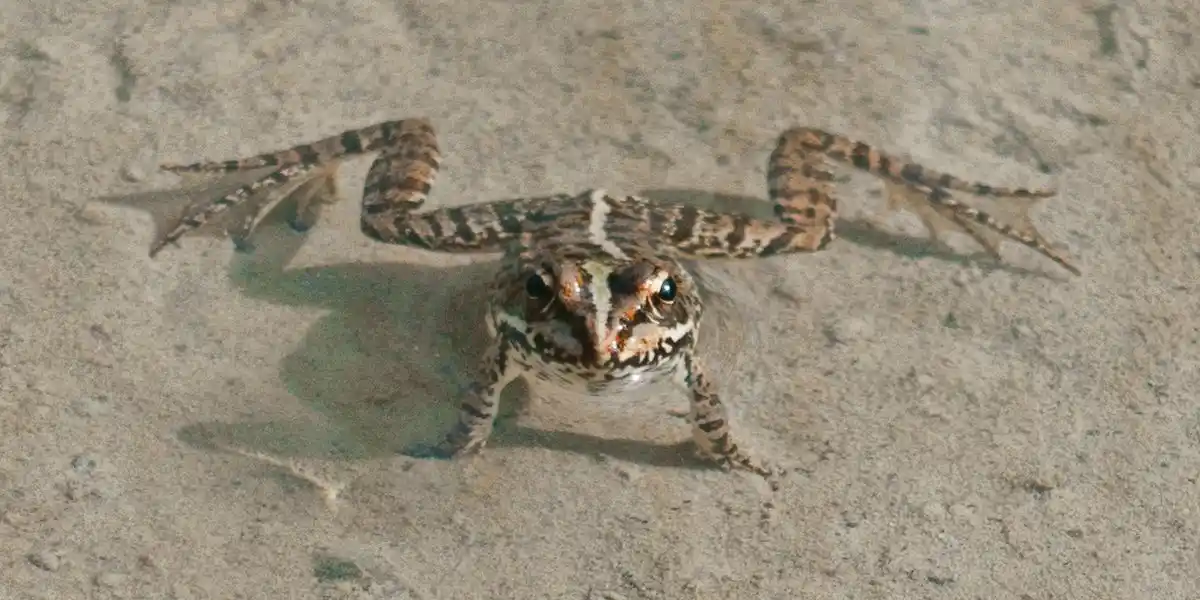
The Role of the Skin in Oxygen Absorption During Submersion
Now that we’ve marveled at frogs’ mouth-breathing skills, let’s not forget about another important player in their underwater respiration game: the skin! Frogs have incredibly permeable skin that enables them to absorb oxygen directly through its surface while submerged in water.
The skin of a frog is not like our own; it’s thin and moist with plenty of mucus production. This moist environment is essential for efficient gas exchange.
As the frog sits beneath the surface, dissolved oxygen from water diffuses across its skin and enters capillary blood vessels just below the surface. Simultaneously, carbon dioxide exits through this same route.
The process is known as cutaneous respiration – a fancy term for breathing through the skin – and is vital for frogs when they’re in aquatic habitats. This amazing ability gives frogs an advantage when it comes to surviving in various environments where other animals might struggle.
They can hang out underwater for extended periods, reaping the benefits of oxygen absorption through their mouth and skin while we humans have to come up for air. Keep reading to explore more intriguing facts about these remarkable amphibians and debunk common misconceptions surrounding frogs’ underwater breathing abilities.
Evolutionary Advantage: Why Do Frogs Need to Breathe Underwater?
Adaptation to Diverse Habitats
Frogs are remarkable creatures that have adapted to various habitats around the world. One of the key adaptations that allows them to thrive in different environments is their ability to breathe underwater. While most frogs are known for their amphibious nature, spending time both in water and on land, there are some species that have evolved to live exclusively in water.
These aquatic frogs have developed specialized respiratory mechanisms that enable them to extract oxygen from the water, ensuring their survival in these unique habitats. In freshwater ecosystems such as ponds, lakes, and streams, where frogs reside for a significant part of their lives, the availability of oxygen can vary greatly.
By evolving the ability to respire underwater, frogs can access a new source of oxygen when terrestrial options are limited. This adaptation provides them with an evolutionary advantage by expanding their habitat range and reducing competition for resources with other organisms confined solely to land.
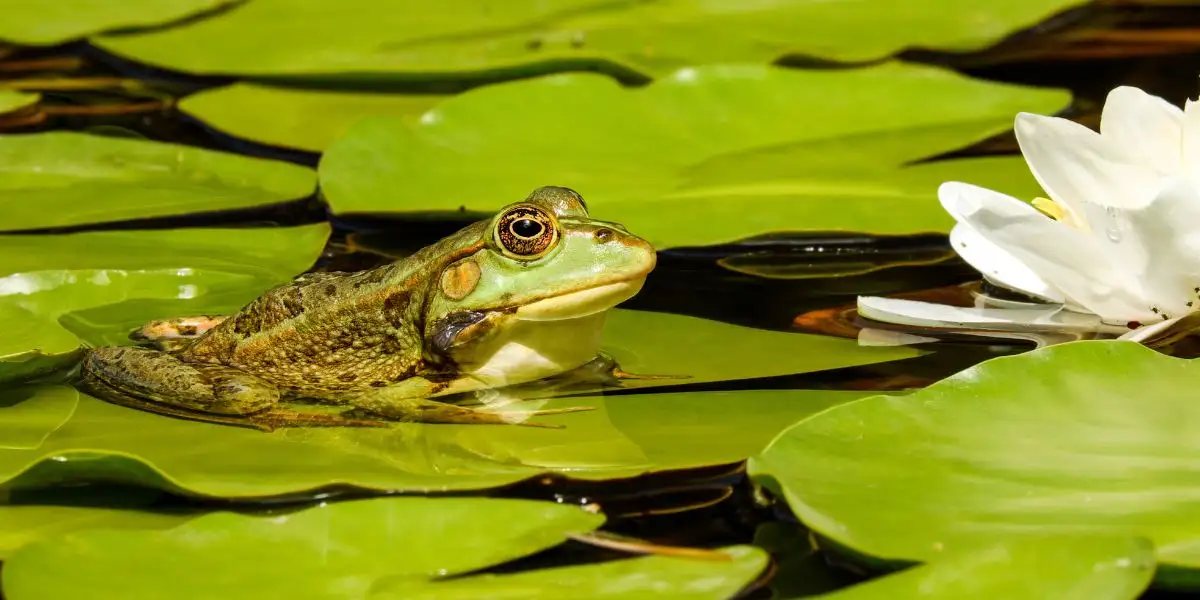
Benefits of Underwater Respiration for Survival
Underwater respiration offers several benefits for frogs’ survival. Firstly, it allows them to engage in activities such as hunting and mating while submerged without needing frequent trips back to the surface for air.
This enhances their efficiency and success rates in catching prey or attracting mates. Additionally, breathing underwater enables certain frog species to avoid predation by aquatic predators that may lurk near the surface where they would otherwise need to breathe or rest.
By remaining underwater for extended periods without surfacing, these frogs minimize their exposure and increase their chances of evading detection by potential threats. Furthermore, during times of drought or extreme heat when bodies of water may partially or completely dry up on land, amphibians with advanced underwater respiration mechanisms can find refuge beneath moist mud or sediment at the bottom of ponds or streams.
This allows them to survive in a dormant state called estivation until favorable conditions return. Thus, the ability to breathe underwater not only aids in their survival but also offers a crucial strategy for enduring challenging environmental circumstances.
The evolutionary advantage of underwater respiration in frogs lies in their ability to adapt to diverse habitats and overcome challenges related to oxygen availability. By living partially or entirely in water, frogs extend their ecological niche and avoid competition with purely terrestrial organisms.
The benefits of breathing underwater include enhanced hunting and mating abilities, reduced predation risk, and the capacity to endure harsh environmental conditions through strategies like estivation. The fascinating world of amphibians continues to amaze us with its remarkable adaptations and resilience.
Interesting Frog Facts
Unusual species with specialized respiratory adaptations
When it comes to frogs, nature has truly outdone itself in the department of creativity. Some frog species have developed extraordinary respiratory adaptations that make them stand out from the rest. Take the Darwin’s frog, for example.
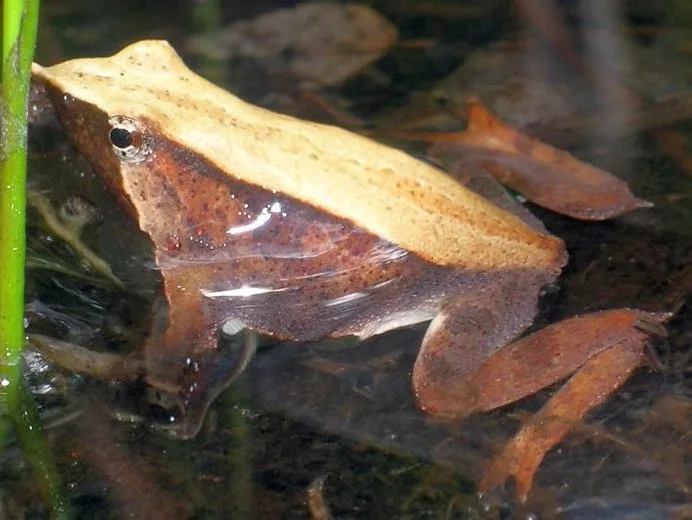
This peculiar little creature, native to South America, has a unique way of protecting its tadpoles. The male Darwin’s frog swallows the eggs and keeps them in his vocal sac until they hatch into fully-formed froglets.
During this time, oxygen is exchanged through the thin lining of the vocal sac, ensuring that the developing tadpoles receive all they need while staying safe from predators. Another fascinating frog with specialized respiratory adaptations is the African lungfish.
While not technically a “frog,” this prehistoric-looking creature deserves mention for its remarkable ability to breathe air as well as extract oxygen from water using gills and a modified swim bladder acting as a lung-like structure. The African lungfish can survive in muddy ponds and rivers even when they dry up completely by burrowing into mud and aestivating until conditions improve.
Frog species that can hold their breath for extended periods
The underwater prowess of some frog species is truly astounding. One such remarkable amphibian is the West African Goliath Frog—often considered the largest frog on Earth—known for its ability to hold its breath underwater for an astonishing amount of time. These mighty frogs can remain submerged for up to five minutes!
Imagine being able to stay underwater like that; you could become an expert treasure hunter or put on mind-boggling magic shows! Another aquatic marvel is the Indian Floating Frog (also known as Hydrophylax bahuvistara).
This small amphibian has developed unique physiological adaptations that allow it to spend most of its life floating effortlessly at water surfaces. By absorbing oxygen through its skin, the Indian Floating Frog doesn’t even have to come up for air.
Talk about living life like a true aqua-zen master! These fascinating frog species with their specialized respiratory adaptations and extraordinary ability to hold their breath underwater remind us of the incredible diversity and adaptability found in the natural world.
The more we learn about these remarkable creatures, the more we realize just how lucky we are to share this planet with them. So next time you encounter a frog, take a moment to appreciate its uniqueness and marvel at nature’s endless wonders.
Common Misconceptions
Debunking myths about frog respiration abilities
There are plenty of misconceptions swirling around when it comes to the remarkable respiratory abilities of frogs. One common myth is that frogs have gills like fish, enabling them to breathe underwater indefinitely.
However, this couldn’t be further from the truth. While some frog species do possess gills during their early life stages as tadpoles, they lose these gills as they develop into adults.
Adult frogs rely on alternate mechanisms for respiration. Another prevalent misconception is that frogs can survive without oxygen for long periods.
While it is true that certain species can hold their breath for extended periods, this ability varies among different frog species and depends on various factors like temperature, activity level, and environmental conditions. Frogs are not superhuman breath-holders; they still require oxygen to survive just like any other living creature.
Furthermore, there is a misconception that all frog species possess the same respiratory adaptations. In reality, there exists a wide range of diversity in frog biology and respiratory adaptations across different species.
Some frogs have evolved specialized anatomical features that allow them to thrive in specific environments such as high-altitude regions or oxygen-poor habitats. It’s crucial to understand that not all frogs share identical respiratory abilities.
Addressing misconceptions about underwater breathing
Contrary to popular belief, when frogs submerge themselves underwater, they do not rely solely on their lungs for respiration. While some aquatic turtle species can extract oxygen from water through specialized glandular structures in their cloaca (vent), frogs cannot perform direct underwater respiration through lung usage alone. One misconception often arises from observing frogs floating motionlessly on the surface of ponds or lakes while seemingly doing fine without access to air.
What many people fail to realize is that these calm moments are typically part of a process called “buccal pumping.” This process involves the frogs absorbing oxygen through their moist skin and membranes inside their mouths while keeping their lungs mostly inactive. It’s a clever adaptation that allows them to extract limited amounts of oxygen when submerged for short periods.
Additionally, another misconception is that frogs breathe in water like fish. Although frogs have permeable skin capable of absorbing oxygen, they cannot extract it directly from the water as fish do with their gills.
The main respiratory surface for frogs remains their lungs, but underwater respiration relies on cutaneous respiration and buccal pumping to supplement oxygen intake. Debunking these misconceptions is crucial for understanding the fascinating world of frog respiration.
These amphibians possess incredible adaptive mechanisms, but they are not immune to the basic principles of respiration that apply to all living beings. By dispelling these myths and gaining a more accurate understanding of frog biology, we can truly appreciate the remarkable adaptations that enable these creatures to thrive in diverse habitats.
Frequently Asked Questions
Frogs can hold their breath underwater for several minutes, typically around 4 to 6 minutes, depending on the species and environmental conditions.
No, not all frogs can breathe underwater. While many frogs have adaptations that allow them to stay submerged for extended periods, some species lack these adaptations and cannot respire underwater.
Yes, most frogs have the ability to breathe both on land and underwater. They have lungs for breathing air while on land, and their skin is permeable, allowing them to absorb oxygen through it when submerged in water.
No, frogs do not stay in water all the time. While some frog species are semi-aquatic and spend a significant amount of time in or near water, most frogs have a dual life, dividing their time between aquatic and terrestrial environments. They lay eggs in water, and their tadpoles develop in aquatic habitats, but as they mature into adults, they often move to live on land.
Conclusion
Frogs truly are remarkable creatures that never cease to amaze us with their unique adaptations and abilities. From their vibrant colors to their astonishing jumping prowess, these little amphibians have captured our fascination for centuries.
Reflecting on the incredible ability of frogs to breathe underwater brings a sense of awe and appreciation for the beauty and diversity found in nature. It reminds us that even in seemingly ordinary creatures like frogs, there is an extraordinary capacity for survival and adaptation.
These amphibians serve as a testament to the resilience and ingenuity that characterizes life on our planet. So let us not overlook or underestimate the wonders that lie within the miniature world of frogs.
May we continue exploring and celebrating the marvels of frog biology as we strive to protect these fascinating creatures and preserve their habitats for generations to come.
After all, they are not just tiny amphibians; they are ambassadors reminding us of nature’s boundless creativity and inspiring us to embrace wonderment in everything around us.


